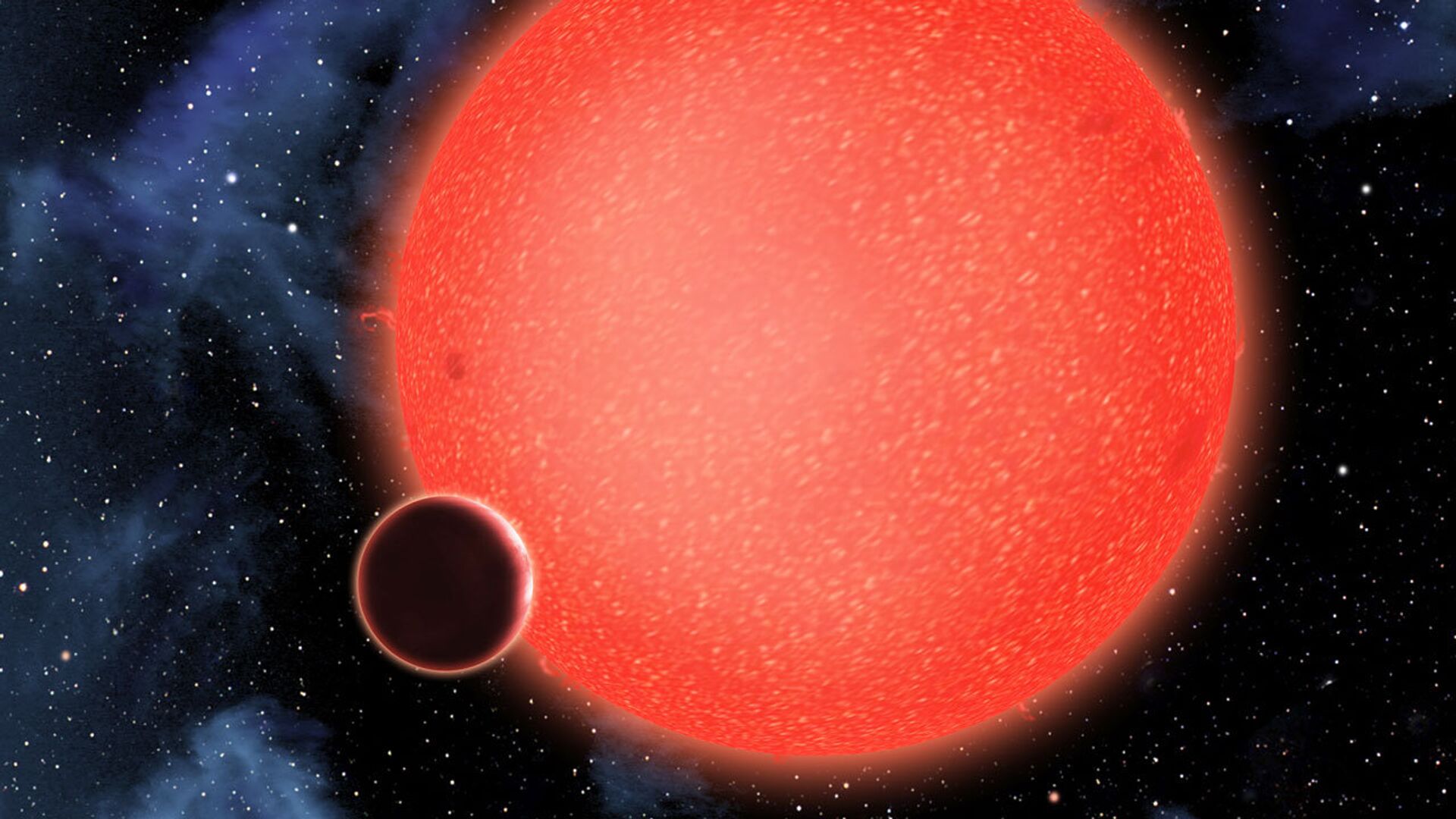https://sputnikglobe.com/20230514/stormy--steamy-glimpse-at-alien-planets-atmosphere-offered-in-study-1110341002.html
'Stormy & Steamy': Glimpse at Alien Planet's Atmosphere Offered in Study
'Stormy & Steamy': Glimpse at Alien Planet's Atmosphere Offered in Study
Sputnik International
A mystery planet shrouded in a thick haze likely contains water vapor and methane, new research has shown.
2023-05-14T10:14+0000
2023-05-14T10:14+0000
2023-05-14T10:14+0000
beyond politics
science & tech
planet
alien
methane
weather forecast
james webb space telescope (jwst)
hubble space telescope
james webb
https://cdn1.img.sputnikglobe.com/img/17150/56/171505668_0:280:1280:1000_1920x0_80_0_0_26d0ac62619b71527f661f593f1ecbc7.jpg
A mystery planet that has long been eyed by scientists, but hidden from telescope view due to the thick haze shrouding it likely contains water vapor, new research has shown.While too hot to be habitable, exoplanet GJ 1214b has an atmosphere that also, possibly, contains methane, state findings published in Nature.The team led by scientists with the University of Maryland and the University of Chicago used NASA’s new James Webb Space Telescope (JWST), which can see in the mid-infrared spectrum, as they embarked upon a quest to investigate GJ 1214b. Astronomers tried to do that before using the Hubble Space Telescope, but failed. Now, the JWST’s powerful Mid-InfraRed Instrument (MIRI) offered a glimpse at the atmospheric composition and temperature of the exoplanet. Observations were carried out as the planet orbited its star, with a "heat map" created, showing the mini-Neptune's both day and night sides.This was the first time that light emitted by this “sub-Neptune” category of planets - seemingly the most common in the Milky Way galaxy - was directly detected.It was this temperature swing that was seen as proof of the presence of heavy molecules, like H2O (water) and CH4 (methane). Water and methane, scientists underscored, were vitally important clues to the planet’s evolution.
https://sputnikglobe.com/20230206/earth-20-astronomers-spot-similar-exoplanet-72-light-years-away-1107026468.html
Sputnik International
feedback@sputniknews.com
+74956456601
MIA „Rossiya Segodnya“
2023
News
en_EN
Sputnik International
feedback@sputniknews.com
+74956456601
MIA „Rossiya Segodnya“
Sputnik International
feedback@sputniknews.com
+74956456601
MIA „Rossiya Segodnya“
gj 1214 b, exoplanet, hubble space telescope, water vapor, methane, james webb space telescope, miri instrument, mid-infrared spectrum, mid-infrared instrument (miri), consistent with the presence of water vapour, too hot to be habitable.
gj 1214 b, exoplanet, hubble space telescope, water vapor, methane, james webb space telescope, miri instrument, mid-infrared spectrum, mid-infrared instrument (miri), consistent with the presence of water vapour, too hot to be habitable.
'Stormy & Steamy': Glimpse at Alien Planet's Atmosphere Offered in Study
Located 40 light-years away from the planet we live on, GJ 1214 b is an exoplanet bigger than our Earth, but smaller than Neptune. It was first discovered in 2009, and scientists have been eager to study it, but a thick layer of haze prevented the Hubble Space Telescope from doing so.
A mystery planet that has long been eyed by scientists, but hidden from telescope view due to the thick haze shrouding it likely contains water vapor, new research has shown.
While too hot to be habitable, exoplanet GJ 1214b has an atmosphere that also, possibly, contains methane, state findings
published in Nature.
The team led by scientists with the University of Maryland and the University of Chicago used NASA’s new James Webb Space Telescope (JWST), which can see in the mid-infrared spectrum, as they embarked upon a quest to investigate GJ 1214b. Astronomers tried to do that before using the Hubble Space Telescope, but failed. Now, the JWST’s powerful Mid-InfraRed Instrument (MIRI) offered a glimpse at the atmospheric composition and temperature of the exoplanet. Observations were carried out as the planet orbited its star, with a "heat map" created, showing the mini-Neptune's both day and night sides.
"We detected a feature that appears consistent with the presence of water vapour and possibly methane. We also found that this thick haze was quite reflective... causing the planet to be cooler than we expected," Dr Michael Roman from the University of Leicester School of Physics and Astronomy said.
This was the first time that light emitted by this “sub-Neptune” category of planets - seemingly the most common in the Milky Way galaxy - was directly detected.
“The ability to get a full orbit was really critical to understand how the planet distributes heat from the day side to the night side... There’s a lot of contrast between day and night. The night side is colder," Eliza Kempton, a researcher at the University of Maryland and lead author of the paper said.
It was this temperature swing that was seen as proof of the presence of heavy molecules, like H2O (water) and CH4 (methane). Water and methane, scientists underscored, were vitally important clues to the planet’s evolution.
“We now have a better understanding of the atmosphere, but the precise composition is still very uncertain. We are hoping to use JWST-MIRI for follow up observations soon. The hope is that we can get even more precise measurements of the planet’s atmosphere and better determine the composition of this mysterious, cloud-veiled world,” Dr Michael Roman said.

6 February 2023, 22:51 GMT




